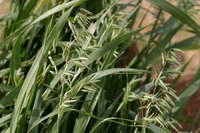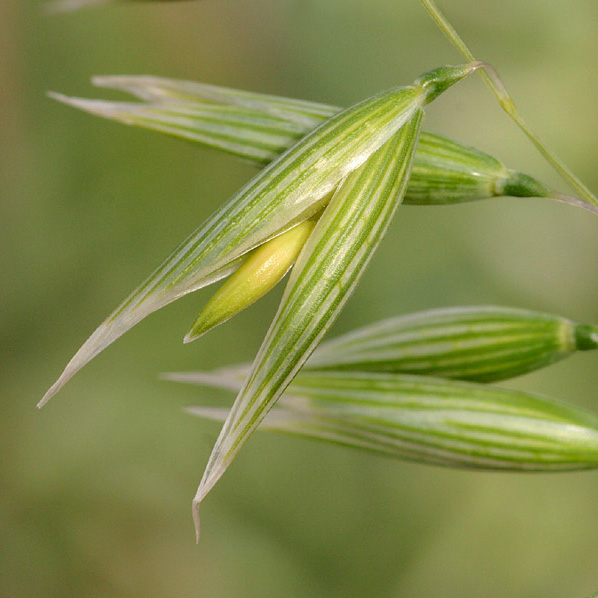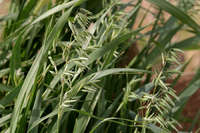|
|
 Blades Patrick Alexander @http://swbiodiversity.org, Usage Rights: Creative Commons Attribution-ShareAlike (CC BY-SA) |  Plant Patrick Alexander @http://swbiodiversity.org, Usage Rights: Creative Commons Attribution-ShareAlike (CC BY-SA) |  Seedheads Max Licher @http://swbiodiversity.org, Usage Rights: Creative Commons Attribution-ShareAlike (CC BY-SA) | | | |
|
| | |
Origin: Introduced Season: Cool and Warm
Habitat Description: Dry wasteland, especially on heavier soils. Roadsides, fields, railroads, and other disturbed places.
Plant Communities:Disturbed Areas
Elevation: 1000 - 7500 feet
Similar Species: A. fatua
Desc:
Oats have a fibrous root system. Stems are erect, smooth, and hollow. The leaves are narrow. The primary seedhead branches are drooping. The spikelets (clustered units of flowers and bracts) are solitary and pendulous.
Identification Notes: Spikelets are mostly 2-flowered, lemma awns are straight and not twisted, often reduced; lemmas are glabrous while the lemmas of A. fatua are long-hairy on their back; florets do not easily fall from the glumes.
Grass Type: Annual Rhizomes: N Stolons: N
Large Dense Clump (> 2 feet): N Bushy (highly branched): N
Height with Seedheads: Greater than 36 inches
Seedhead Structure: Branched - open and spreading Seedhead Droops: Y
Flowering Period: Jun - Jul
Number of Flowers per Spikelet: Multi-flowered Spikelets One-sided: N
Awns: Less than 1/4 inch Three Awns: N Awns Bent: N
Flower and Seedhead Notes: The seedhead is open, pyramidal, loosely spreading, nodding, 7 to 15 inches long and 2 to 6 inches wide. Spikelets have 2 or 3 wedge-shaped fertile florets, overlapping glumes; attach to main seedhead by thin stems and stay on the seedhead at maturity.
Blade Hairy:
N
Blade with White Margins:
N
Blade Cross section:
Flat
Blade Notes:
Leaves are cauline (arise from the upper part of the stem). Leaf-blades are 5 to 15 inches long and less than 1/2 inch wide. The leaf-blade surface is minutely rough-textured on both sides. The tip of the leaf-blade tapers to a point.
Sheath Hairy:
N
Tuft of Hairs at top of Sheath or Collar:
N
Ligules:
Membranous
Auricles (Ear-like lobes at collar area:
N
Forage Value:
Oats are high in protein, carbohydrates and fiber. Both the grain and fodder are utilized by grazing animals. The forage yield and forage feeding value of the harvested crop change as the oat plant matures through its growth stages.
|
|